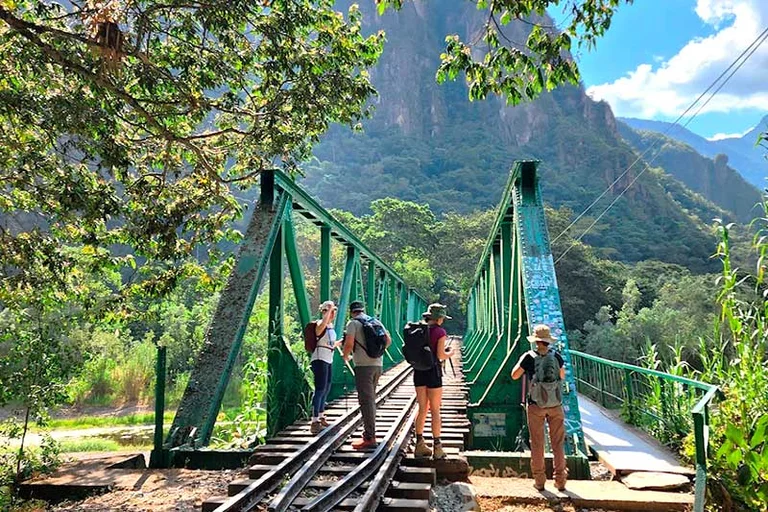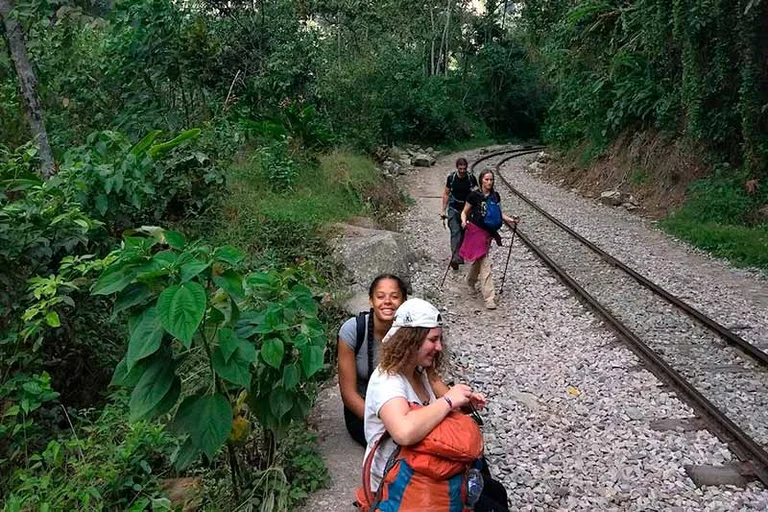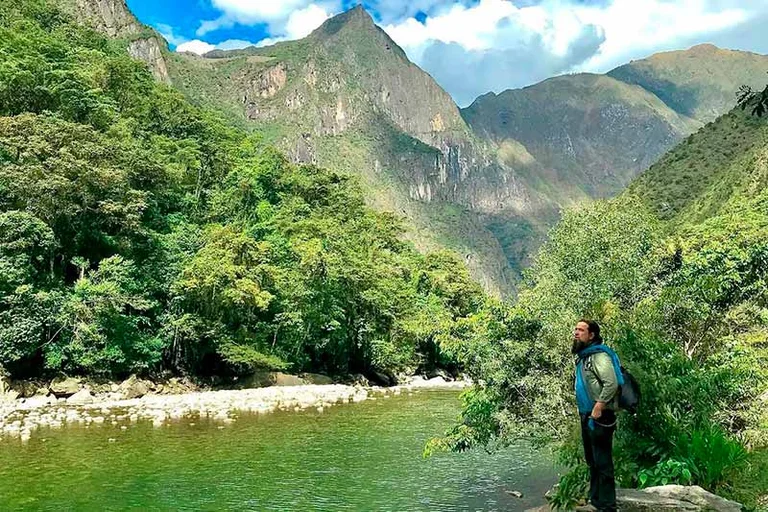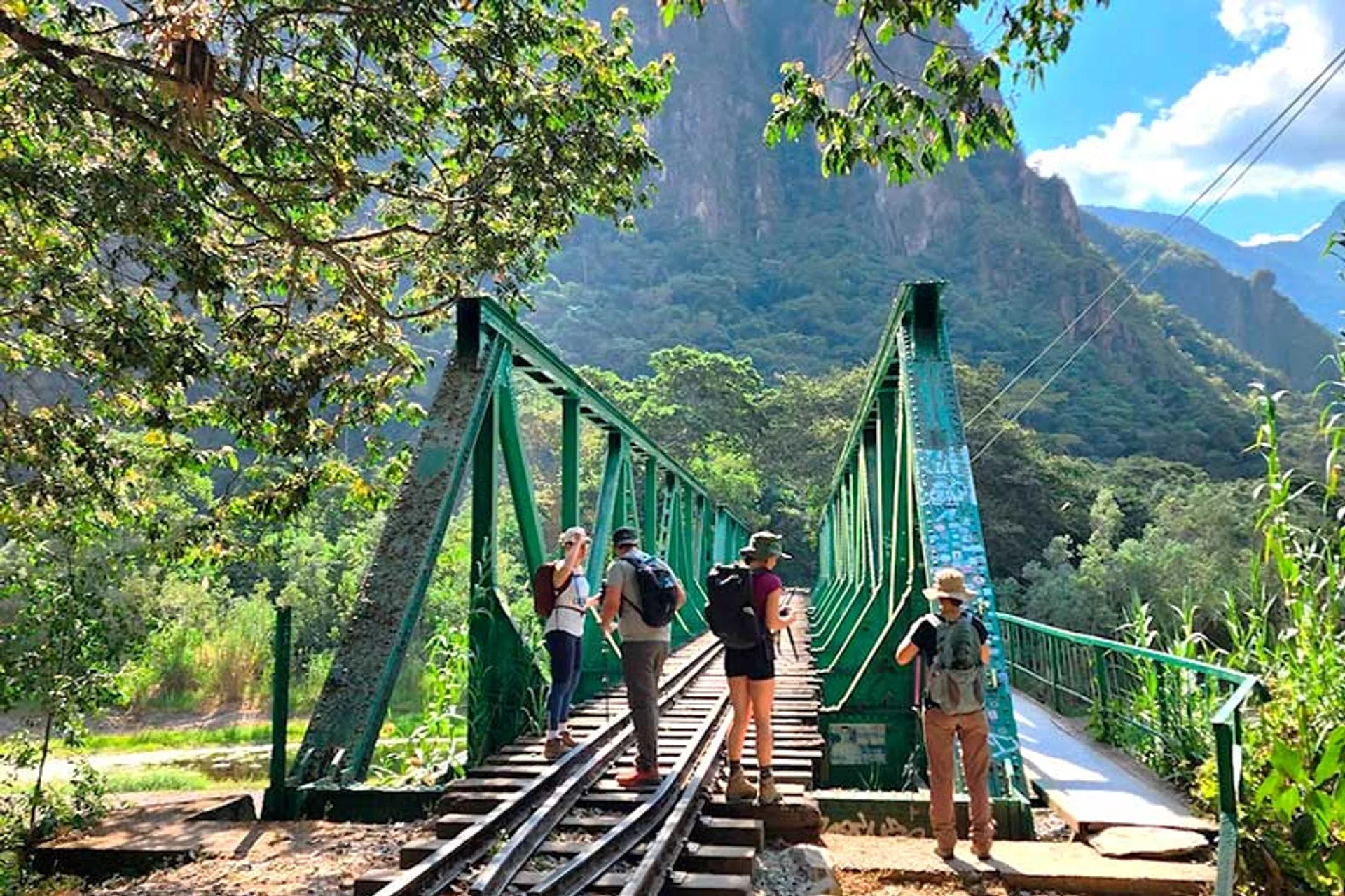The route to Machu Picchu through Santa Teresa
The route to Machu Picchu through Santa Teresa is a journey full of surprises and novelty to explore the world’s most iconic citadel. This route combines the adventure of a car trip filled with landscapes, a short hike full of biodiversity, and the wonder of immersing oneself in the history and splendor of Machu Picchu. Along the way, we can enjoy a series of benefits both ecologically and economically while immersing ourselves in Andean culture and nature.

Content
- Cusco – Santa Teresa
- Santa Teresa (Hydroelectric) – Aguas Calientes
- Aguas Calientes – Machu Picchu
- Return
- What will we see on the route from Santa Teresa (Hydroelectric) to Aguas Calientes?
- Benefits of the route from Santa Teresa (Hydroelectric) to Aguas Calientes
- Ecological Impact
- Frequently Asked Questions
Cusco – Santa Teresa
The car journey begins in the city of Cusco, from where you take the road to Ollantaytambo, an Inca town full of history. After crossing the Sacred Valley, the route continues along the road to Abra Málaga (4,316 m.a.s.l.), a mountainous stretch that offers views of snow-capped peaks and valleys. From here, we can appreciate the noticeable change in temperature; in just a few hours, the cold Andean climate gives way to the humid heat of the jungle’s edge.
The final stretch takes us to Santa Teresa, a town located in the Urubamba River valley. The road is often a bit rough, especially during the rainy season. Although it has been improved in recent years, there are still narrow and unpaved sections, especially near Hidroeléctrica. The total journey takes between 6 to 7 hours and is ideal for those seeking the thrill of a trip full of landscapes, allowing for strategic stops to take photographs or enjoy small local attractions.
Secure your trip with us
Through Carmachupicchu, you can book the journey to Machu Picchu via the Santa Teresa route, an option that invites you to experience a unique and authentic adventure. By choosing this alternative, you not only access a planned route that combines the charm of the car journey with the adventure of hiking through diverse natural landscapes, but you also opt for a more economical and sustainable option. Book your trip and discover a new way to reach one of the world’s most iconic destinations!
Santa Teresa (Hidroeléctrica) – Aguas Calientes

After arriving in Santa Teresa, we take a short stretch to the entrance of Hidroeléctrica, where our walking journey begins. The hike usually lasts between 2 and 3 hours, depending on each person’s pace and the stops made to enjoy the scenery. The path runs parallel to the train tracks and the Urubamba River, passing through forested areas where the humidity and vegetation create a magical setting.
During the hike, we can observe a great diversity of flora and fauna. Visitors will find everything from ferns and wild orchids to birds like parrots, and with some luck, they might spot a Cock-of-the-Rock, making the path highly appealing for nature and photography lovers.
Aguas Calientes – Machu Picchu
After the hike, we will arrive in Aguas Calientes, getting even closer to the marvelous citadel. Access to Machu Picchu opens up an experience that may include taking a bus or a final hike up steep stairs.
Inside Machu Picchu, we will have the opportunity to fully explore the ancient Incan architecture, visiting plazas, temples, and agricultural terraces, each with its own significance. The stone structures, built with astonishing precision, speak to the knowledge of a civilization that integrated uniquely with its surroundings. Within the complex, the trails allow for a slow, contemplative exploration, where each step reveals the connection between culture, nature, and the spirituality of the Incan world.
Return
The return journey can be taken in several ways from Aguas Calientes. First, we can opt to walk back via Hidroeléctrica and return to Cusco by car, or we can consider taking the train to Ollantaytambo and then a car to Cusco.
What will we see on the route from Santa Teresa (Hidroeléctrica) to Aguas Calientes?
The walk from Hidroeléctrica to Aguas Calientes is a journey that allows us to observe the vast biodiversity of the region alongside train tracks and structural networks that have become part of the environment.
- Environment: The path runs parallel to the railway that connects the hydroelectric plant with Aguas Calientes. Throughout the route, there is a transition in the landscape, from cultivated areas to more forested sections with abundant vegetation. The trail is mostly compact, making it very easy for us to walk in a straight line.
- Infrastructure: As you progress, it is common to find structures related to hydroelectric activity. These elements blend into the landscape without being too frequent or unsightly, offering a clear contrast between human intervention and the natural surroundings.
- Biodiversity: The walk allows you to notice the variety of native flora, from shrubs and ferns to banana trees and different species that form small forests. Various bird species can also be observed, such as parrots, Andean cocks-of-the-rock, hummingbirds, and many butterflies.
- Local environment: The route passes through areas where agricultural practices and rural houses can be seen. This proximity to local life offers the opportunity to observe how communities utilize the land for farming and trade, adding another layer of value to the experience.
Benefits of the Santa Teresa Route (Hidroelectrica) to Aguas Calientes

Choosing to walk from Hidroelectrica to Aguas Calientes brings several benefits, ranging from personal well-being to a more affordable journey. Below are some of the most relevant aspects:
- Physical Well-being: Walking is an activity that exercises the body, helping to strengthen our health, muscles, and joints. Moreover, the walking pace adapts to each person, as the route is very gentle and straight, allowing for rest stops and great views.
- Connection with Nature: Walking the Hidroelectrica route offers the opportunity to be close to the vast diversity of flora and fauna. Along the way, you can observe different types of vegetation and various bird species and animals that inhabit the area. This experience can help reduce stress and improve well-being.
- Reduced Transportation Costs: Walking allows you to save on the usual cost of taking the train, enabling you to allocate those funds to other activities, such as Machu Picchu entrance fees or local experiences.
Discover New Places
After completing the Hidroelectrica trek full of discoveries, we invite you to enhance your experience by visiting two unique attractions in Aguas Calientes. On one hand, the butterfly sanctuary allows you to closely appreciate the diversity and beauty of local butterflies in a well-maintained environment. On the other hand, the hot springs offer the opportunity to relax and rejuvenate, immersing yourself in warm waters amidst a natural setting that helps you regain energy after the walk. Both options not only enrich the trip but also provide a complementary perspective of Aguas Calientes, making your journey to Machu Picchu even more memorable.
Ecological Impact
The journey to Machu Picchu through Santa Teresa offers benefits that go beyond the tourist experience. By choosing routes that integrate walks through less-traveled areas, we promote tourism that aims to minimize environmental impact. The walk from Hidroelectrica to Machu Picchu, for example, takes advantage of existing trails and reduces the need for new constructions, which helps preserve natural areas.
Additionally, the route benefits local communities economically by encouraging the sale of their products and the use of services from small family-owned businesses. This dynamic helps make tourism a sustainable source of income for the region while also fostering cultural and environmental preservation.
